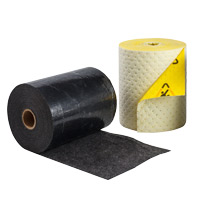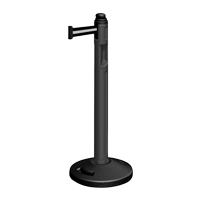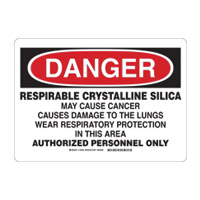Labels by Sign and Label Printer
Paint Stripe Floor Marking Stencils
Valve Lockouts & Hose Lockouts
Safety and Facility Signs and Labels Software
Wire and Component Label Software
Product Identification Label Software
Lockout Tagout Procedures and Tags
SmartID Aerospace RFID Solutions
- Confined Space Signs
- Construction Site Signs
- Electrical and Arc Flash Signs
- First Aid Signs
- Forklift and Warehouse Safety Signs
- Lockout Tagout Signs
- Machine Operation Signs
- Maintenance Signs
- Marine and IMO Signs
- Personal Protection (PPE) Signs
- Radiation and Laser Signs
- Safety Awareness and Compliance Signs
- Slip, Trip and Floor Obstacle Hazard Signs
- Blank Pipe Markers
- IIAR Ammonia Pipe Markers and Components
- Pipe Markers for Acids and Bases
- Pipe Markers for Air and Ducts
- Pipe Markers for Fire Systems
- Pipe Markers for Gases
- Pipe Markers for Maintenance and Operation
- Pipe Markers for Oil
- Pipe Markers for Other Liquids
- Pipe Markers for Steam
- Pipe Markers for Water
Pipe Marker Accessories & Mounting Brackets
Maintenance and Production Tags
Aerospace, Defense and Mass Transit
Datacom , Telecom Identification
Crystalline Silica Rule Summary
Learn more about OSHA’s Respirable Crystalline
Silica Standard and find safety solutions for your workplace
Overview - What is Silica?
Crystalline silica is a common mineral found in naturally occurring and man-made materials that consists of very small particles. Exposure to respirable crystalline silica can occur during the manufacturing of glass, pottery, ceramics, brick, concrete and artificial stone, as well as during the use of industrial sand in operations or abrasive blasting with sand.
Facts About Silica
Around 2.3 workers are exposed to Silica on the job (2 million in the construction industry alone)
OSHA’s rule is expected to save over 600 lives and prevent more than 900 new cases of silicosis each year
Standard Overview
OSHA’s recent final rule on limiting exposure to respirable crystalline silica was issued to curb lung cancer, silicosis, chronic obstructive pulmonary disease and kidney disease that has been linked to high levels of silica. The regulations are addressed in 1910.1053 for general industry and maritime and 1926.1153 for construction.
Because OSHA’s previous permissible exposure limits (PELs) for silica were outdated, the new PEL for workers is 50 micrograms of respirable silica per cubic meter of air (µg/m3) at an 8-hour time-weighted average (TWA).
- Determine if work tasks expose employees to respirable crystalline silica by reviewing Table 1 (1926.1153(c)(1)), or by conducting an exposure assessment
- For tasks exceeding the PEL, notify affected employees and implement the required engineering and work practice controls, and level is respiratory protection
- Review housekeeping practice to eliminate any dry sweeping/brushing activities that could exposure employees to respirable crystalline silica
- Establish a written exposure that’s readily available and reviewed at least annually
- Make medical surveillance available at no cost to employees
- Communicate hazards to employees and provide training on the hazards, tasks and safety measures in place
- Accurately record and maintain all exposure measurements
Demarcating Regulated Areas
A sign at each entrance must be posted to notify employees that they are entering a regulated area, the hazards and need for respiratory protection.
Browse Compliant Silica Signs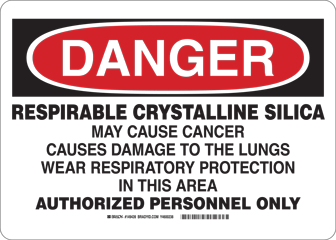
To decrease the number of employees exposed to respirable crystalline silica, regulated areas must be marked. Employers can use floor marking tape, stanchions, barricades or cones to mark the boundaries of regulated areas.
Respiratory Silica in Absorbents
One of the most common compositions for granular absorbents is diatomaceous earth, which is 80-90% silica based. As a safer, non-silica solution to spill response and absorbents, Brady SPC absorbent pads and rolls are a cost-effective product for leaks, drips and spills. Also, shop Brady's non-silica based granular absorbent solution.
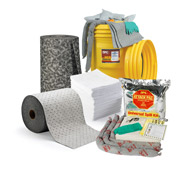
Product Recommendations
Here are our top product recommendations to get you started.Resources
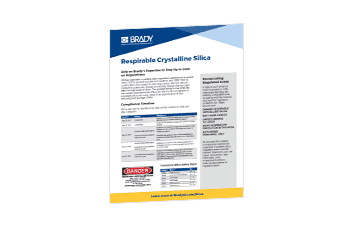
Silica Standard Info Sheet
Learn more about OSHA’s compliance timeline and Brady safety solutions.
Download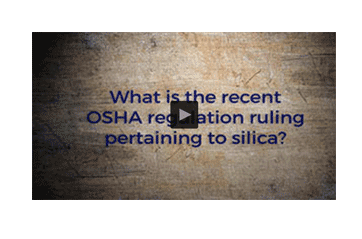
Silica Toolbox Talks Video
Watch video for additional information on the recent OSHA ruling on silica.
Watch Video
